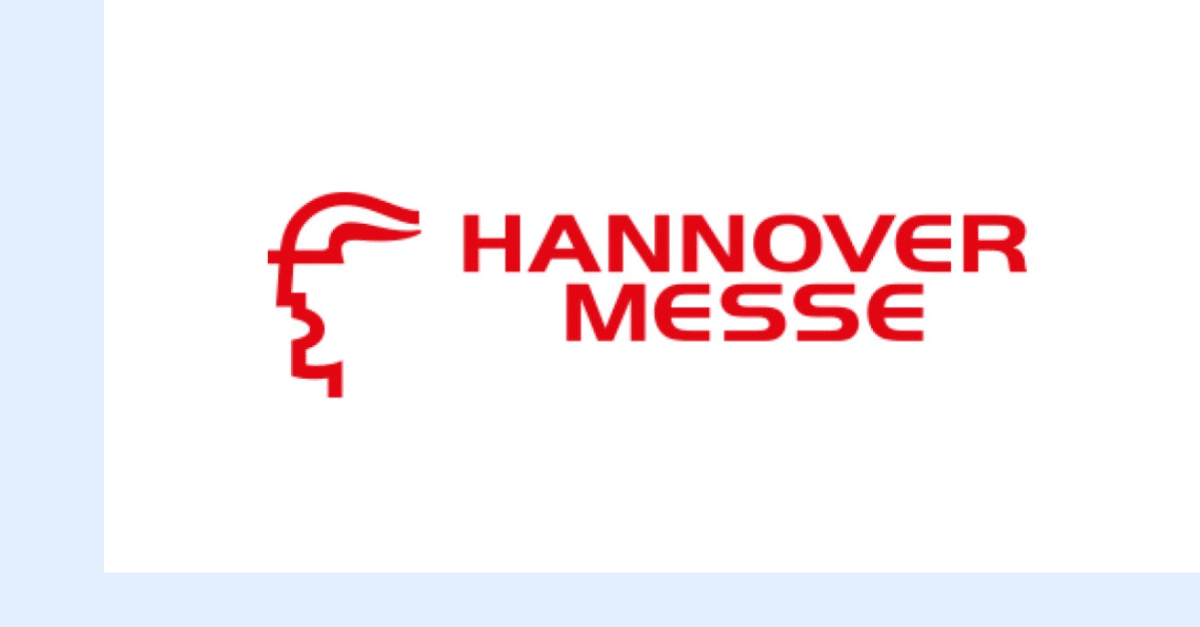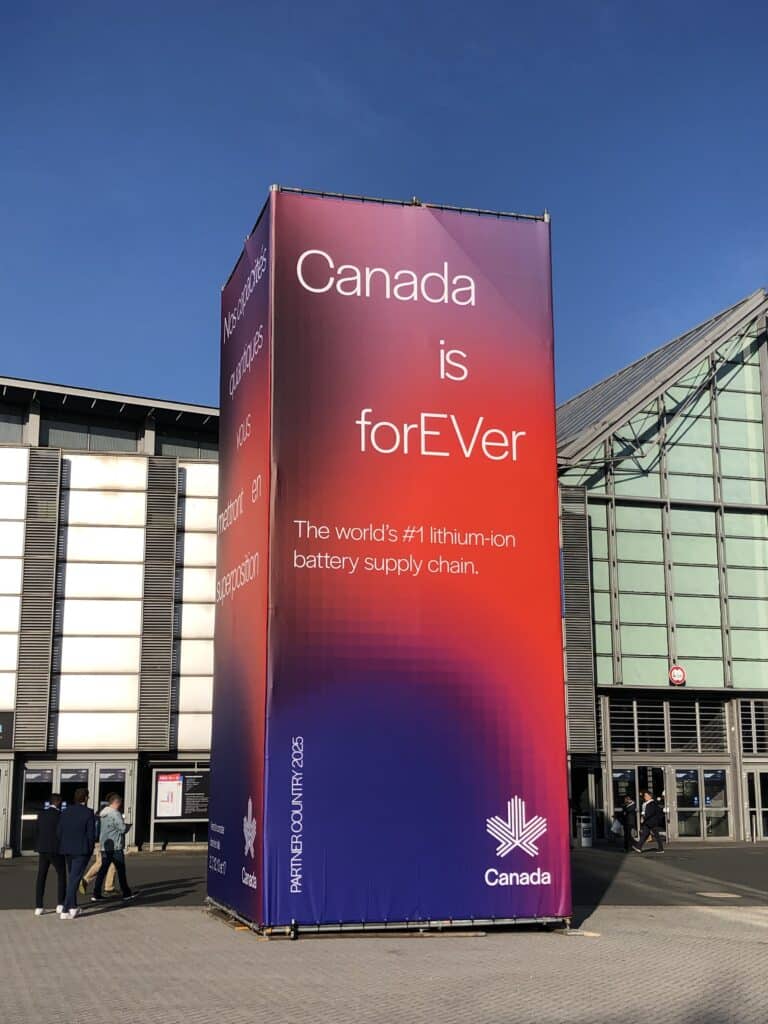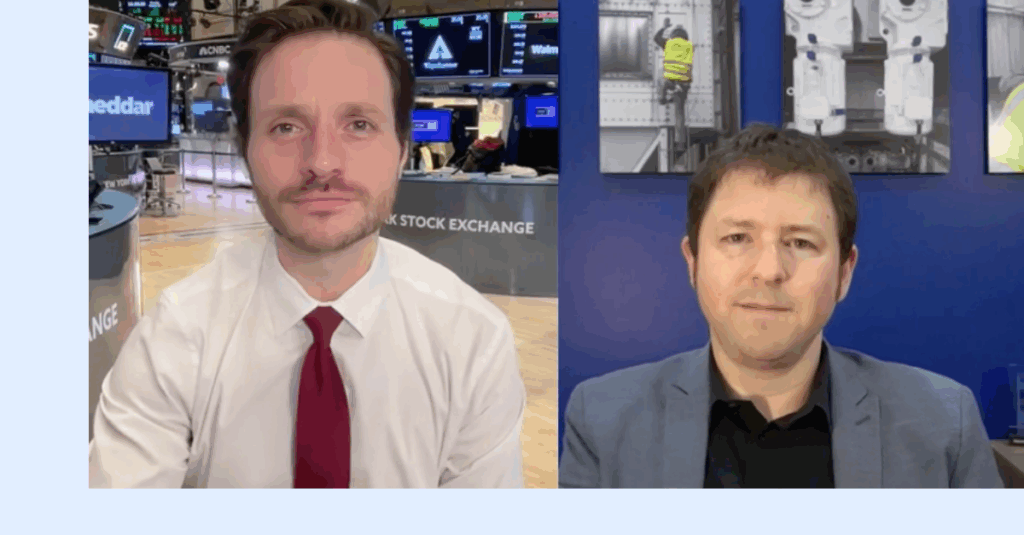
President Donald Trump’s “Liberation Day” tariff announcements fell right in the middle of Hannover Messe 2025—the impossibly large manufacturing trade show attracting 127,000 visitors and 4,000 exhibitors from 150 nations over five days. Yes, much confusion was expressed. Why these taxes?!? But this deep uncertainty offered a certain clarity: the need to double down on what you can control—building on trusted partnerships and investing in AI solutions. With this renewed focus, optimism bloomed. Can humans and tech still save the world?
Robots Ready To Limbo
Under the motto “Shaping the Future with Technology,” Hannover Messe 2025 made one thing clear: Industrial AI has come of age. Robots have also evolved far beyond mere bookish chess nerds. They’re now bookish chess nerds who can be the life of a limbo party (and address challenges like the massive shortage in skilled labor).
AI delivers proven value, as these often repeated numbers show: For every $1 invested in AI, the average ROI is $3.5! The average deployment takes less than a year, and the ROI takes an average of 14 months! These figures don’t even account for the still-to-be-properly-tallied impact of GenAI and other emerging technologies. Certainly, GenAI has become more reliable, with smaller, specialized, and often localized language models working to minimize its nastier habits—like dumbass hallucinating.
Training The Bag Of Cats That Is AI
While GenAI has received considerable attention in recent years, this was definitely the year of agentic AI—autonomously acting software bots. Unfortunately, barely anyone knows what they are—many mistakenly label mere chatbots as agentic. Real agentic AI involves the AI taking action based on its own decisions—not human commands. Meanwhile, physical AI—autonomously acting robotic systems—is also making a strong entrance. But yes: safety first!
None of these technologies will supplant the others. Instead, they’re being tightly integrated, each doing what they excel at. In short, old-school meat-and-potatoes machine learning excels at finding, tracking, predicting and optimizing patterns in seas of data. Agentic AI shows promise in chasing down information from different sources—breaking down organizational silos. GenAI shines at summarizing and collating data into actionable insights. And eventually, the physical AI of robots will handle the literal heavy lifting. Humans remain in the loop to offer their strengths in problem solving and to ensure these AIs don’t get loopy—or take too many coffee breaks.
“It’s like making a salad, you use all these different vegetables and connect it all with a secret sauce that’s GenAI,” one marketing professional was overheard saying.
So, will this resulting digital Waldorf solve all our problems? Probably not.
For manufacturers, the game remains unchanged: focus on your biggest problem, then find the tech solution that best solves it. If it works, scale fast like a bunny hopping for cover.
The Changing Conversation
The salad metaphor illustrates how tradeshow conversations have evolved over the past few years. The vast majority of manufacturers are now embracing AI solutions. As the technology becomes more mainstream, it’s less about early adopters who know all the jargon. Marketing professionals can now cut straight to the salad.
“Interoperability” is another key buzzword finally coming of age. For instance, the world’s largest vendor of enterprise resource planning software SAP, has applied AI throughout the supply chain—from the “top floor to the shop floor.” And it invites third parties to join the fun. This means a specialty solution like Augury’s Machine Health solution can be bi-directionally integrated with SAP Digital Manufacturing platform.
What’s also notable is the sheer number of partnerships—between not only the big players but the 300 startups present—bringing everyone’s expertise to the table for value capture. After all, there’s still so much to be mutually won and shared—in terms of both sustainability and the bottom line.

Taming The Elephant In The Room: “Don’t Waste A Crisis”
Speaking of partnerships… As a “partner country”, Canada was in full effect in Hannover with 250 stands and a massive and rather cheeky ad campaign (“Home of the Brains”, “Canada is forEVer”, etc.).
.The aptly named panel discussion ‘Trade in a Changing Geopolitical Environment: Diversification Opportunities through EU-Canada Trade’ featured H.E. Dr. Ailish Campbell, Ambassador of Canada to the European Union, and Denis Redonnet, Deputy Director General & Chief Trade Enforcement Officer of the European Commission.
They had plenty to discuss, given Canada and the EU’s long and mutually beneficial history of trade—one that has grown and diversified greatly since the colonial boom in beaver pelts. Today, the EU is Canada’s second-largest trading partner after the US, with $118 billion of annual trade.
The two entities share many common goals: building trustworthy AI frameworks, continuing support for Ukraine, tapping into fast-growing Asian markets, cutting innovation-stifling red tape, increasing capital for startups and scaleups, and more.
They discussed finding solutions “in an age of geopolitical fragmentation and weaponization” and returning to the predictability and stability of accepted regulations and reliable partners.
Both parties realize that if the world is changing structurally, they must adapt as well. “But we have to proceed with a sense of optimism and optionality, playing to our strengths. Our values will matter more than ever—our commitment to market economies and social solidarity,” said the ambassador.
“Let’s keep it calm and really focus on our options. Today is just the beginning. We’re going to need each other and these partnerships we’re building at Hannover more than ever.”
“For instance, it’s now the law that negotiating the permitting process for a new factory can no longer take up to five years but rather nine to twelve months—a rule that sounds worth enforcing.”
New Rules For Europe
Yes, the EU has a warranted reputation for bureaucracy and abundant regulations. However, the new Net-Zero Industry Act and the Clean Industrial Deal aim to streamline—and fund—the innovation pathway for clean tech industries and green manufacturing. They hope to achieve this “by promoting domestic manufacturing and diversifying supply chains.”
“Everyone knows we like our working groups in the EU,” said policy officer Daniel Gerber in a refreshingly self-deprecating presentation. “So, of course, we made a working group for the governance of this act. But our goal is to make it easier to make an impact.”
For instance, it’s now the law that negotiating the permitting process for a new factory can no longer take up to five years but rather nine to twelve months—a rule that sounds worth enforcing.
“In Germany, there’s a misunderstanding of what visions actually are. Visions are usually things that could be one day. In Germany, the understanding of visions is things that will be one day. This reveals something about how to raise money in Germany.”
Vision: Not What Can Be But What Will Be.
David Reger, founder of Neura Robotics, is enjoying a banner year—backed by a fresh €120 million financing round from European investors and recognition as Entrepreneur of the Year.’ As the originator of the term “cognitive robotics,” his company develops robots combining AI with groundbreaking sensors and hardware design to not only empty your dishwasher but also address the skills labor shortage—and potentially save Germany’s ailing automotive industry.
In the fireside chat, ‘Artificial Intelligence and its Physical Embodiment—Access to EU Finance,’ Reger explained how he rapidly raised substantial funding on a continent he previously thought impossible. He credits the European Investment Fund, the venture capital arm of the European Investment Bank, with facilitating the process. “But you really have to prove that what you have works,” said Reger.
“In Germany, there’s a misunderstanding of what visions actually are. Visions are usually things that could be one day. In Germany, the understanding of visions is things that will be one day. This reveals something about how to raise money in Germany.”
When starting the company, his vision was likely still too nebulous, and he initially grew his business in China. Now, he quickly secured European backing with working models featuring the world’s only safe human detection sensor, a billion euros in the order books, and a roadmap to self-sustainability by 2026. “But we must continue raising funds to maintain our position at the forefront and succeed globally.”
Reger can also now expand his vision: making physical AI and robotics an economic pillar for Germany and Europe. “We need to build on European efficiency. It’s what we excel at, though it’s diminished lately. Physical AI is an area we haven’t yet missed out on. And this is where efficiency plays the biggest role.”
The market is certainly there. One of China’s 2030 goals is to deploy millions of humanoid robots in industry to address its aging workforce. “And that’s only China…”
Plus, there’s a German automotive industry to save. “In my opinion, we still produce the best cars, but we’re no longer efficient,” said Reger. “Here, robotics could play a major role. I always say, don’t support us as a robotics company—this market is growing organically. Instead, support automotive by giving them more automation opportunities during their downsizing to improve efficiency. This will have a much more positive effect.”
Make Robots, Not War
It’s not about replacing existing automation or humans, Reger stressed. It’s about bringing in robots as much-needed skilled workers. “For example, there are fewer and fewer welders. We’re missing 100,000 welders just in Germany—about half a million in the US.”
Meanwhile, Reger refuses to apply his technology to weaponry. “The whole world once depended on Germany and Europe because of our technological advancement, something we’re losing. That’s also why we’re talking about wars again—because the world doesn’t depend on us as much as before. I believe the answer is advancing our technology until the world depends on us again. Then we won’t need to weaponize ourselves.”
How’s that for an optimistic will-be vision?
Read previous Hannover Messe reports:
‘Hannover Messe 2024: Bridging the Pragmatic with the Fantastic’.
‘Industry 5.0: Unleashing Both Industry 4.0’s Potential And Human Potential’
Or: Read more news and developments around AI and manufacturing.




